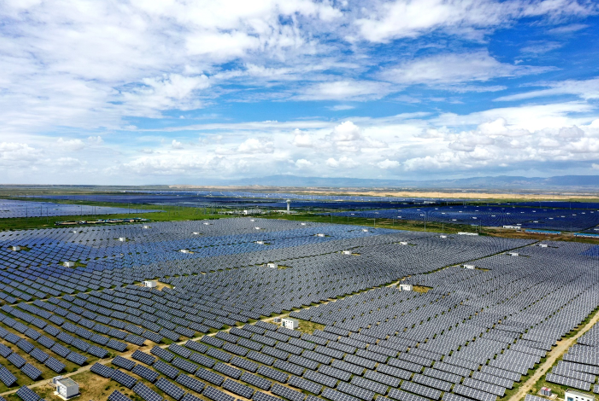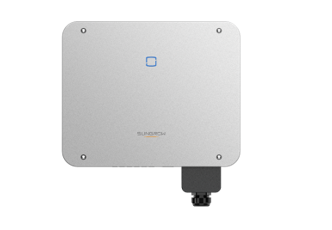The solar energy industry has been undergoing rapid evolution, with technology advancements driving efficiency and reducing costs. One crucial component at the heart of these systems is the inverter. As solar panels collect solar energy and generate direct current (DC) electricity, it is the inverter's role to convert this DC into alternating current (AC), which is compatible with our home appliances and the grid. Among the variety of inverters available, the solar string inverter and micro inverter stand out as popular choices.

What are Solar String Inverters and Micro Inverters?
The solar string inverter is a centralized unit that handles the conversion for an entire group or "string" of solar panels. Typically, multiple panels are connected in a series to form a string, and they are connected to the string inverter that deals with the DC coming from all the panels.
On the other hand, micro inverters are individual units attached to each solar panel. Thus, every panel has its own dedicated inverter converting DC to AC right at the source.
Comparing Solar String Inverters and Micro Inverters
The debate between string inverters vs micro inverters cannot be settled before discussing the pros and cons of both types. Here is how both of these inverters differ from each other.
Inverter Location
Solar string inverters are positioned at a central location, typically near the main electricity panel of the building or at a designated ground site. Compared to this, micro inverters are attached directly to each solar panel, usually on the rear side.
Panel level Optimization
The solar string inverter operates at the string level. This means that if one panel has performance issues for any reason, it can affect the output of the entire string. However, with micro inverters, each panel operates independently so that the performance of one doesn't hinder the others.
System Flexibility
Solar string inverters have limitations in this case. They often require uniformity in panel types and their orientations within a string. On the other hand, micro inverters offer more versatility, allowing for variations in panel types and orientations without any significant decline in performance.
Efficiency
While solar string inverters are generally efficient, their performance can drop if a single panel in the string faces issues. Micro inverters maintain a consistent efficiency level because each panel is optimized separately.
Cost
Solar string inverters usually come with a lower initial price tag when compared to the cumulative cost of micro inverters for the same capacity.
Monitoring and Maintenance
Solar string inverters provide monitoring at the string level. This means identifying a problematic panel can demand manual inspection or a smart component for real-time diagnosis of the string inverter. Micro inverters often come with advanced monitoring capabilities at the panel level, making it easier to detect and address specific issues.
Reliability
Both of them have downsides at this point. Micro-inverters have yet to undergo a sufficiently extended period of usage to generate comprehensive long-term performance data. As they are situated in one of the solar panel's most heat-prone locations, extended exposure to high temperatures over several years may potentially elevate the likelihood of experiencing failures.
Solar string inverters are reliable, but a failure in the inverter will halt the entire string's operation. If one fails, the others continue to operate, preventing a total system shutdown.
Sungrow’s String Inverter SG25-50CX-P2 Recommendation
Sungrow presents the state-of-the-art string solar inverter, SG25-50CX-P2, that has become many projects’ choice. This product stands out due to its high yield, lower investment requirements, proven safety, and intelligent operation and maintenance features. Check out more information below:

High Yield
The Sungrow string inverter is capable of handling a DC 15A current input, making it compatible with over 500W+ PV modules. It features a dynamic shading optimization mode and a built-in PID recovery function, giving you optimal performance and longevity.
Smart Operation and Maintenance (O&M)
This inverter is designed with intelligent O&M in mind. It includes key component diagnosis and protection, smart IV curve diagnosis, and a grid fault record function, facilitating easy and remote O&M.
Lower Investment
The SG25-50CX-P2 is lightweight and easy to handle. It also features a plug-and-play design with a buckle, simplifying the installation process and reducing the overall investment required.
Proven Safety
Sungrow focuses on safety, which is also evident in their SG25-50CX-P2 inverter. It has IP66 protection and C5 anti-corrosion features, as well as DC Type I+II SPD and AC Type II SPD. Additionally, it supports the AFCI 2.0 function, which further enhances its safety profile.
Wrapping Up
Sungrow stands as a global titan in the solar inverter domain with a remarkable 405 GW installed capacity worldwide (As of June 2023). Their extensive product range, spanning 150 countries, coupled with prestigious honors like the China Grand Awards for Industry and Global Top 500 New Energy Enterprises, underscores their commitment to a sustainable future. This fame is created by Sungrow’s professional and proficient team members, 40% of whom are experienced R&D talents. So, don’t hesitate to contact Sungrow for efficient solar energy solutions!